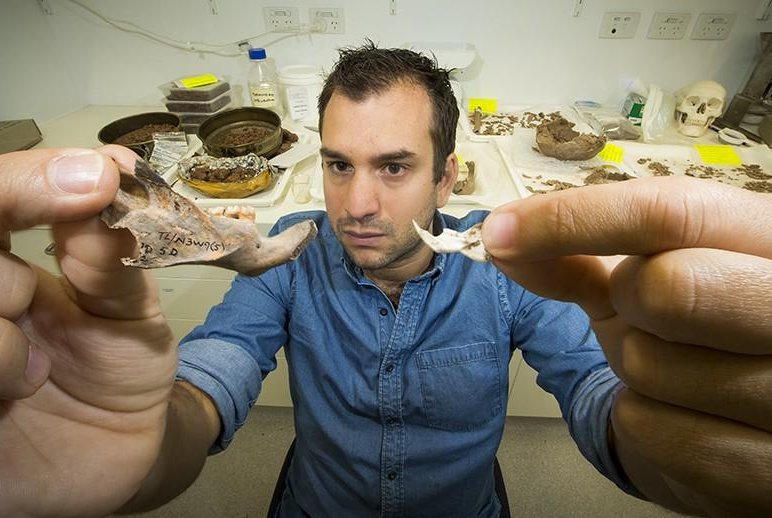Julien Louys shows off the jaw bone of a giant rat species found in East Timor. Photo by ANU
ACTON, Australia, Nov. 6 (UPI) -- A significant haul of fossils in East Timor has revealed seven new giant rat species, one of which was ten times the size of modern rats.
"They are what you would call mega-fauna," Julien Louys, a researcher with Australian National University, said in a news release.
The largest species would have weighed over 11 pounds, the size of a small dog. A modern rat typically weighs just over a pound.
Louys is part of a team of archaeologists working to trace the path of early humans across the islands of Southeast Asia. They're hoping to get a clearer picture of biodiversity on the islands before and after humans, to better gauge the ecological impacts of their presence.
Louys says the rats lived for thousands of years alongside early humans, who first arrived on East Timor 46,000 years ago.
"We know they're eating the giant rats because we have found bones with cut and burn marks," he said.
At least initially, hungry humans didn't put a dent in ancient rat populations.
"The funny thing is that they are co-existing up until about a thousand years ago," Louys explained. "The reason we think they became extinct is because that was when metal tools started to be introduced in Timor, people could start to clear forests at a much larger scale."
Researchers say their findings can inform today's conservation efforts. Their latest discoveries suggest deforestation is and always has been a much greater threat to vulnerable species than human predation.















